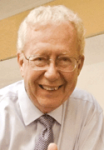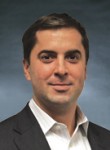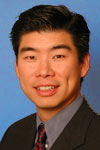
Biomedical materials live at the intersection between the principles of materials design and the functionality of medical practice. A key feature of that intersection is cross-pollination between the materials and medical fields—so robust conversations between those in the lab or factory and those treating patients is critical for development of products that best serve the ultimate user—us humans.
So if you’re wondering how to increase your pollination, look no further than Columbus, Ohio. The 2014 Innovations in Biomedical Materials: Focus on Ceramics conference will be coming to Ohio’s Capital City, July 30–August 1. “Bioceramics 2014 is designed to bring together applied researchers, medical practitioners and medical ceramic materials manufacturers and marketers to better develop emerging technologies, treatments, and products and devices,” states the conference website.
Mark Mecklenborg, ACerS director of technical publications and meetings, says, “It really is an effort to get the medical practitioner community talking with the materials researchers and manufacturers. The hope is to develop effective products and equipment, to focus research on areas with products that need to be developed, and to have an interchange among all three groups.”
The meeting, which will cover the healthcare environment, clinical applications, materials characterization, and surgical trends, will feature four stimulating plenary sessions:
- Plenary Session I — Affordable healthcare? The role of bio-ceramic technology
 Speaker: Larry Hench
Speaker: Larry Hench
Hench is currently a professor in the Biomedical Engineering Program at the Florida Institute of Technology in Melbourne, Florida, a professor and director of Special Projects at the University of Central Florida, a visiting professor at Kings College/Guy’s Hospital University of London, a guest faculty at the Department of Bioengineering at Florida Gulf Coast University, and an emeritus professor at the University of Florida and Imperial College London (busy guy!). Prior to these appointments, Hench has a storied professional history, including his role as inventor of Bioglass. Hench has received many awards and is also an author of children’s books about science.
- Plenary Session II — The Current Regulatory Environment
 Speaker: Glenn Stiegman
Speaker: Glenn Stiegman
Stiegman is vice president of clinical and regulatory affairs at Musculoskeletal Clinical Regulatory Advisers, LLC (MCRA) in New York, New York. He leads the submission, regulatory strategy, analysis, and development of products at MCRA. As former chief of the Orthopedic Devices Branch for the US FDA, Stiegman is an expert on the orthopedic industry and guidance and policy for marketed orthopedic devices.
- Plenary Session III — Clinical Testing
 Speaker: Safdar Khan
Speaker: Safdar Khan
Safdar Khan is an orthopedic surgeon and heads the Division of Spine at The Ohio State University Wexner Medical Center in Columbus, Ohio. Khan earned his MD from Aga Khan University (Pakistan) and completed clinical and research training at The Hospital for Special Surgery, University of California at Davis, Rush–St. Luke’s Presbyterian Medical Center, and Shriner’s Hospital for Children. Khan’s specialty is adult and pediatric advanced spinal deformities, and he has received a long list of honors and authored several journal articles, book chapters, and presentations. Khan is a self-described “amateur chef” and used to rock out on bass guitar in a band.
- Plenary Session IV — Surgical Trends
 Speaker: Hyun Bae
Speaker: Hyun Bae
Hyun Bae is an orthopedic surgeon at The Spine Institute in Santa Monica, Calif. Bae earned his MD at Yale University and completed training at Northshore University Hospital, Hospital for Special Surgery, and Case Western Reserve University. He has received several honors, authored many research publications and book chapters, and frequently presents research and clinical work at professional meetings. He specializes in minimally-invasive microsurgery and treatment of cervical and lumbar spinal diseases, and he is a pioneer in new therapies, including stem cell transplants and nuclear replacements.
Each plenary session will be followed by panel discussions designed to maximize attendee participation and cross-pollinate dialogues over a range of topics, including orthopedics (two panels), new technologies, regulatory environment, radiotherapeutics, clinical testing, bioceramic testing, and dental applications. Some great names are already lined up for each panel discussion, with additional business and research leaders coming soon.
A new feature at Bioceramics 2014 is a Rapid-Fire Presentation session, in which researchers, medical practioners, and manufacturers can highlight their latest advances in research, products, and techniques. Presenters introduce their work in just two short minutes—and just two powerpoint slides—so brevity and impact are key. Presentations will be followed by a poster session to allow more in depth discussions and follow-up questions.
Bioceramics 2014 organizer Steve Jung says, “The Rapid-Fire Presentation is a significant enhancement to the traditional poster presentation. It allows the presenter the opportunity to highlight key aspects of the technology and helps the audience identify who they need to speak with during the poster session.”
Presentation applications are now accepted—apply today and then start practicing your two-minute delivery!
Feature image credit: Rfgagel; Wikimedia Creative Commons License.

